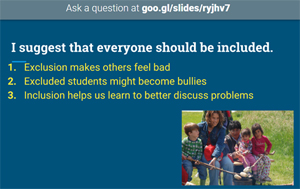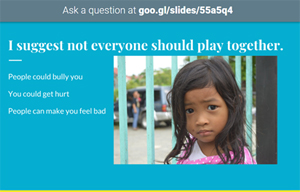 At the beginning and end of each school year, our curriculum leadership team meets to discuss how we can better instruction and assessment through professional reading, discussion, and collaboration. This year, our assistant superintendent, Rita Becker, introduced the book study, Collaborative Teams That Transform Schools: The Next Step in PLCs.
At the beginning and end of each school year, our curriculum leadership team meets to discuss how we can better instruction and assessment through professional reading, discussion, and collaboration. This year, our assistant superintendent, Rita Becker, introduced the book study, Collaborative Teams That Transform Schools: The Next Step in PLCs.
I reflected on how elementary teachers have dedicated their time to bettering their literacy instruction since the implementation of the Common Core State Standards Initiative in 2009. Teachers were trained to deepen cognitive skills students needed to draw conclusions, support claims, problem solve, experiment, or investigate; to use close reading of complex texts that challenge students to ask and answer questions with textual evidence across the disciplines; and to implement technology in a hybrid learning environment with 1:1 chrome books in grades 3–5 and 1:3 in grades K–2.
During the meeting, I realized that while cognitive skills, close reading abilities, and technology implementation are all critically important, they aren’t the only criterion for meeting the Common Core Standards and College- and Career-Ready Standards. In order to prepare students for higher education and the global workplace, teachers need to find ways to develop students’ conative skills, or their ability to “evaluate both information and emotions and then respond or act appropriately.”
 Where these conative skills might be more commonly referred to as “soft skills,” I believe that these abilities to interpret, to consider perspectives, to interact responsibly, and to resolve conflicts have never been more important than today. Thus, I was inspired to make a hard impact on these soft skills in our elementary literacy curriculum.
Where these conative skills might be more commonly referred to as “soft skills,” I believe that these abilities to interpret, to consider perspectives, to interact responsibly, and to resolve conflicts have never been more important than today. Thus, I was inspired to make a hard impact on these soft skills in our elementary literacy curriculum.
Using the fourth-grade Word Generation resources, I guided students to use key vocabulary from the unit to read, write, and discuss how to answer the question, Should everybody be included on the playground? At the end of the unit, students prepared a Google Slides presentation stating their opinion supported with reasons.
Instead of just idly listening to the presentation, students became active participants in the presentation with the use of Google’s Slides Q&A. Once the presenting student sets the presentation to “Presenter View,” a short link appears at the top of the presentation and a “Presenter View” window opens (best used on extended display) to see incoming questions, speaker notes, and a timer.
 Students in the audience can use their name or anonymously type questions and vote on questions. The presenter can then choose which questions to answer by clicking “present.” Presenting students are faced with audience questions in real time that can be displayed and addressed at any point the presenter chooses.
Students in the audience can use their name or anonymously type questions and vote on questions. The presenter can then choose which questions to answer by clicking “present.” Presenting students are faced with audience questions in real time that can be displayed and addressed at any point the presenter chooses.
Though the students were nervous at first, this provided a safe atmosphere to teach students to appreciate new perspectives by “realizing that feelings, assumptions, and beliefs about a situation affect one’s reaction to it,” that “words and actions influence and affect other people,” and how to “combine controversial ideas to come up with a better idea.” Even I found myself considering new perspectives through the questions students posed and answered.
Most importantly, conative skills are not something to teach “if there’s time” or for “students who need enrichment.” These are skills all students will need. It might seem hard at first, but these soft skills can be taught alongside the ELA content in classrooms with technology.
 Meg Rishel is an instructional ELA coach for Eastern York School District. You can follow her on Twitter.
Meg Rishel is an instructional ELA coach for Eastern York School District. You can follow her on Twitter.
This article is part of a series from the International Literacy Association’s Technology in Literacy Education Special Interest Group (TILE-SIG).